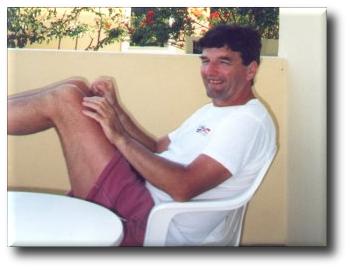Bifurcation Phenomena in Viscous Fluid Flows and Granular Media My primary research interests are in bifurcation phenomena in viscous fluid flows. Most of my work has been concerned with instabilities in the flow between concentric cylinders, commonly called Taylor-Couette flow. I find this a particularily interesting problem as it is one of the very few fluid dynamical problems where one can carry out quantitative comparison between the results of numerical calculations of the Navier-Stokes equations on physical boundary conditions and experimental observations. The principle aim of my research on Taylor-Couette flows has been to determine if the global dynamics are organised by local bifurcations in the solution set. In particular, I am interested in the effects of geometrical symmetries on both stable and unstable solutions and the interaction between them. In using this approach, I have uncovered some novel features including 'Silnikov dynamics' and associated homoclinic chaos. The central idea is to search for universality between apparently different mechanisms for generating chaos in this problem. Currently, we are extending this approach to other fluid flows in both simple and complex fluids. Related fluid dynamical research is concerned with bifurcations in flow through a suddenly expanding channel, electrohydrodynamic instabilities in nematic liquid crystal flows and convection in molten gallium. In the last two flows, Silnikov dynamics have been found and in the liquid crystal problem small scale fluctuations provide significant contributions to the macroscopic dynamics. My interests in low-dimensional chaos is continuing with projects on non-Newtonian flows and chaos in a closed flow with restricted symmetry. Perhaps one of the most intriguing problems in fluid mechanics is the transition to turbulence in a pipe. Mathematically, the flow is linearly stable and yet it becomes turbulent in practice at modest Reynolds numbers. Recent research with a colleague, Alan Darbyshire, showed that there is a 'finite amplitude transition curve' below which disturbances decay and above they can be amplified and grow into turbulence. The size of the perturbation required to produce turbulence diminishes as the Reynolds number increases but appears to remain finite even at moderate values. This was somewhat of a surprise since previous work suggested that the slightest disturbance is needed to promote turbulence at high flow rates. One criticism of our work is that the pipe was not long enough to establish fully developed conditions. We are currently planning the construction of a very long pipe in Manchester. It is intriguing that we should be studying the problem here since Osborne Reynolds did his work in Engineering in Manchester approximately 100 years ago. Perhaps his spirits will help! I have always found playing with 'toy' problems helpful in making progress with difficult nonlinear fluid dynamics problems. These include systems of pendulums, electronic oscillators and impacting beams. The insight they can give into much more complicated systems, most often by analogy, is invaluable. In any case, many of them are interesting in their own right and only the foolhardy would dismiss them as 'simple' problems. A good example of this is to be found in a set of coupled electronic oscillators which have produced both novel steady solutions and dynamical behaviour neither of which are present in the individual units. My most recent research has been on pattern formation in a box of particles which is oscillated from side-to-side. These are of interest to me because, unlike a fluid, the macroscopic behaviour depends on the details of the particle shape. This makes any theory of such phenomena extremely difficult but it is not the job of experimentalists to make life easy for theoreticians. |

